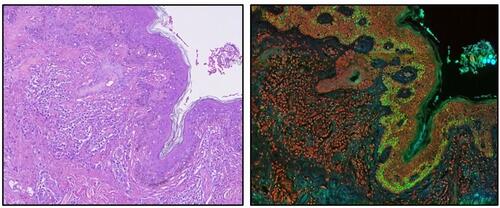HPV16 in Oral Rinses Predicts Prognosis in Oropharyngeal Cancer
By LabMedica International staff writers
Posted on 13 Aug 2015
The presence of persistent human papillomavirus type 16 DNA in oral rinses after treatment for HPV-related oropharyngeal cancer is rare, but it appears to be associated with poor prognosis and therefore may have potential as a long-term tool for tumor surveillance.Posted on 13 Aug 2015
HPV infection is responsible for the majority of oropharyngeal carcinomas in the USA and in some patients with HPV-positive tumors, the cancer will progress after treatment and earlier diagnoses of progressive or recurrent disease may result in earlier treatment and better outcomes.

Image: A digital artist's impression of the human papillomavirus or HPV (Photo courtesy of Christian Anthony).
Scientists at Johns Hopkins University School of Medicine (Baltimore, MD, USA) and their colleagues carried out prospective cohort study of 124 patients with new HPV-related oropharyngeal cancer who had one or more post treatment oral rinses. Oral rinse samples were collected at diagnosis and after treatment at 9, 12, 18, and 24 months after diagnosis, and evaluated for HPV DNA.
Oral rinse samples were tested for 36 types of HPV DNA using PGMY 09/11 primers and line-blot hybridization. Oral rinses at diagnosis were also evaluated for HPV16 viral load using TaqMan quantitative polymerase chain reaction. Oral HPV16 viral load was considered either undetectable or detectable, and detectable viral load was further categorized by number of copies in 2 µL of oral rinse sample as either low, less than 160 median detectable viral load, or high, equal to or greater than 160.
The investigators found oral HPV16 DNA was common at diagnosis in in 67 /124 (54%) of participants. However, it was detected in only six patients after treatment, including five patients with persistent oral HPV16 DNA that was also detected at diagnosis. Although infrequent, the detection of persistent oral HPV16 DNA in post treatment oral rinses was associated with worse disease-free survival and overall survival. All five patients with persistent oral HPV16 DNA developed recurrent disease and three died of the disease. In contrast, only 9/119 (10.7%) patients without persistent oral HPV16 DNA developed recurrent disease.
The authors concluded that their data suggest that persistent HPV16 DNA detection in post-treatment oral rinses, although uncommon, is associated with poor prognosis and may be predictive of disease recurrence, in particular local recurrence. Therefore, HPV16 DNA detection in oral rinses is a potentially useful tool for long-term tumor surveillance for the growing population of human papillomavirus-related oropharyngeal carcinoma (HPV-OPC) survivors. The study was published on July 30, 2015, in the journal JAMA Oncology.
Related Links:
Johns Hopkins University School of Medicine













